17
2012Another Ordeal, and not Just the Walk!
Work’s Been Hectic…
So not so much time for the photography this month. Nevertheless a fresh ordeal had been planned (more walking around the Sandstone Trail) and executed with somewhat less pain than previously. Small 20 minute walks several times a week seem to have helped my general levels of fitness, so there was definitely more energy to think about the pictures. Sadly, on Sunday 26th February 2012 the weather was not brilliant with featureless grey skies to accompany dull scenery. The sun did peak out once or twice, but this was not a tripod-wielding foray, and I had left out my gradient neutral density filters to save weight, so hand-held HDR seemed the order of the day.
Walk of the Week
The walk this week was a circular trek around Beeston Castle which began in the car park opposite the castle entrance which walkers also use. You can find out more about the castle on the English Heritage site. You may remember the previous walk along the Sandstone Trail after Christmas.So off we set, Helen, Rebekah, Cyril, Suzie (complete with new hat) and myself.
The snowdrops looked lovely as they graciously carpeted several areas of the route, and contrary to initial expectations, the sun graced us with its presence on several occasions. This did not resolve the issue of high-contrast shooting conditions however, and the need for HDR (3-5 stop range) persisted through most of the day. Particularly for those shots of the castle where the foreground was in sunshine but the castle in shadow.
HDR shooting has become part of my routine these days, although I usually try to retain some subtlety in the final shots, but as with everything else this brings choices… There is necessarily a trade-off between speed and precision when it comes to HDR, attempted during a brisk walk with friends. Being generally slower than my fitter peers it would be bad-form to dally too long over multiple shots. Often in overcast situations with deep shadow areas it would be tricky to determine the exact range of exposure to capture everything anyway, so for these reasons quick and dirty frequently rules the day.
Dial in a 3-5 stop auto-bracket and then shoot and check the histograms to see whether that number caught the range or not. If not dial in another couple of shots and go again. Otherwise, if you are shooting in more relaxed company, use spot metering to check the difference in range between the highlights and shadows. It helps when auto-bracketing to use continuous high-speed shooting as this helps you to keep the camera still between shots and lets you know clearly when the bracketing sequence has finished – if you use single shots and lose track of your count, you’re sunk with your next photograph.
Dynamic Range Issues
My D3 has a dynamic range of 8.6 EV at ISO 200, though if I shoot at 14-bit in RAW (my default) then with ACR I have nearer 12 EV to work with. You need to shoot a range of exposures, in aperture priority, that will ensure that there is no clipping of the shadows in the longest exposure, or of the highlights in the shortest one.
Because of the way that the digital sensor works it is necessary to make sure there is a good margin between the end of the shadow peaks and the left-hand wall of the histogram to avoid posterization and excessive noise in the shadows in the final result. This is because digital sensors have a linear ratio of exposure to “negative” density. Clearly digital cameras don’t produce film negatives, but you know what I mean.
For the sake of example, let’s imagine that a photo sensor has a dynamic range of 6 stops. If you imagine these 6 stops as test tubes arranged in a row, then a 12-bit RAW image file contains 4,096 tonal levels. The first test tube is equivalent to the brightest stop of exposure. When it is filled to the top it will contain half of all the available levels i.e. 2,048. The next test tube along will represent the next stop of exposure which is half as bright and will therefore contain 1,024 levels, thus being only half full. Likewise the third stop will be half as bright again – 512 levels (a quarter full), the fourth 256, the fifth 128 and the darkest stop only 64 levels (just 1/32 of its capacity). The signal to noise ratio increases massively at these low light levels, making sure that the shadow detail is not only poorly represented by brightness levels but also very noisy. This theory has been incorporated into the notion of “shooting to the right”. This means adjusting the exposure value to keep the brightest values as close to the right-hand edge of the histogram as possible in order to maximize the number of levels in the shadow areas.
If you are interested in learning more about practical HDR, digital exposure issues and extreme lighting take a look at the references cited below.
White Balance
These days, when shooting my wildlife photographs outside, I generally use a White Balance preset of 5880K. This works well with landscape shots too, and keeps the white balance constant when shooting panoramas or HDR sequences. If you like technical accuracy there is no substitute for an ExpoDisc white balance filter.
HDR Software Choices
I use Photomatix Pro 4.1.4. Photoshop CS5 HDR Pro can also be useful, but seems to take more fiddling with to get a pleasing result. I generally aim for a very flat result, with well preserved highlights, as this gives more scope for the second and third pass processing in ACR and Photoshop. Everyone seems to prefer a different spin on HDR, from photo-realistic through to incredibly surreal. I’m not a fan of strong haloing, but other than that I don’t mind a strong visible HDR effect. I really like that hyper-saturated postcard look. See references below for more information on resources.
- A Sign of things to come…
- High Contrast Scene…
- See these Pine Cones Dad?
- Where’s my fill flash!!
- Castle from Under a Tree…
- Alternate Castle View…
- More Castle…
- Pleasant Spot for Lunch…
- The Right Path…
- Sweeping Left…
- Where’s the Castle?
So What was the Ordeal?
Nikon announced the D4 and then, shortly afterwards, the D800. I want both, they are very different animals and each is clearly useful for different purposes. Of course I can’t have both, so where should I spend my money? More on the issues, the dilemmas and the solution next time.
References
- Mastering Digital Exposure and HDR Imaging. Understanding the Next Generation of Digital Cameras. Chris Weston. RotoVision SA 2008.
- Practical HDR. A Complete Guide to Creating High Dynamic Range Images with your Digital SLR. David Nightingale. ILEX 2009.
- A Guide to Extreme Lighting Conditions in Digital Photography. Duncan Evans. AVA Publishing SA 2006.
- Extreme Exposure. Pushing the Limits of Aperture and Shutter Speed for High-Impact Photography. David Nightingale. ILEX Press Ltd 2010.
- The HDR Book. Rafael Concepcion. Peachpit Press 2011.






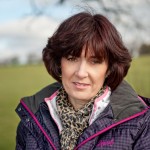
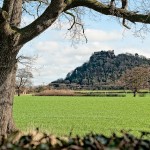
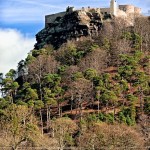


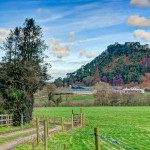

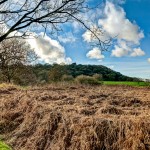
Recent Comments